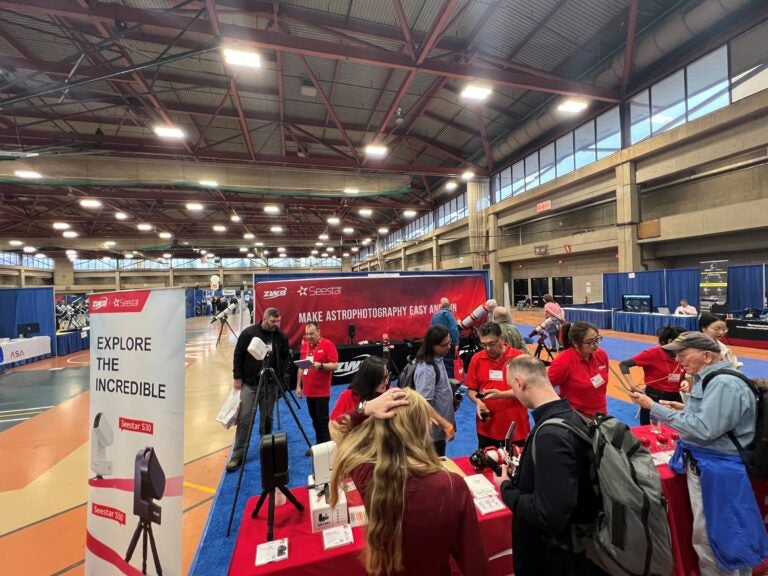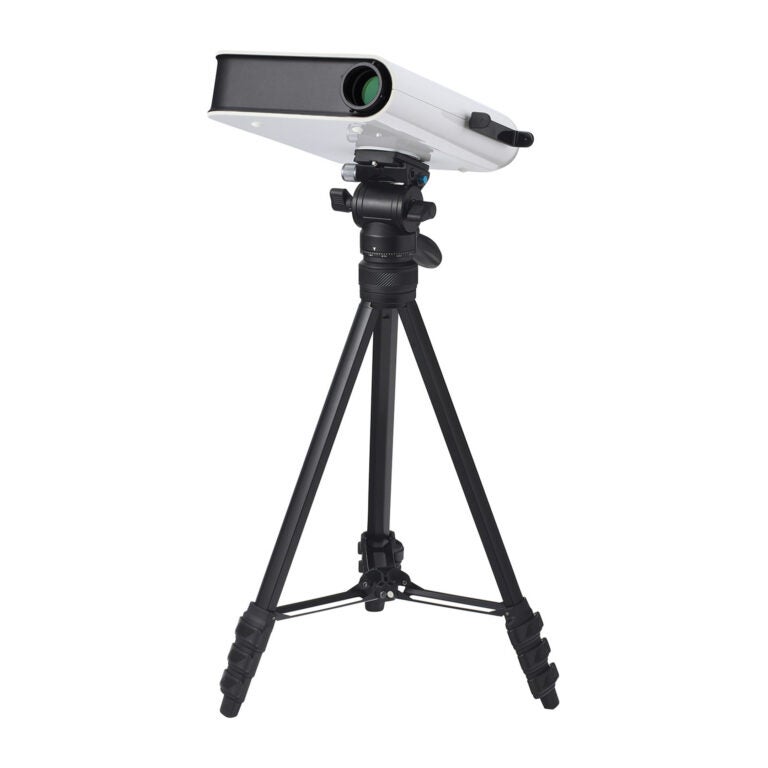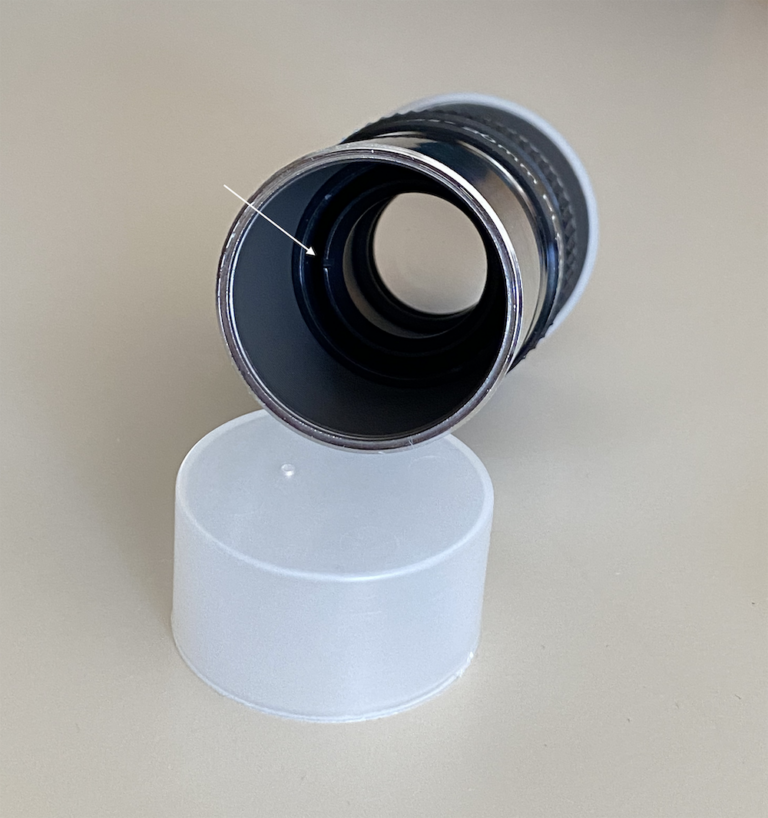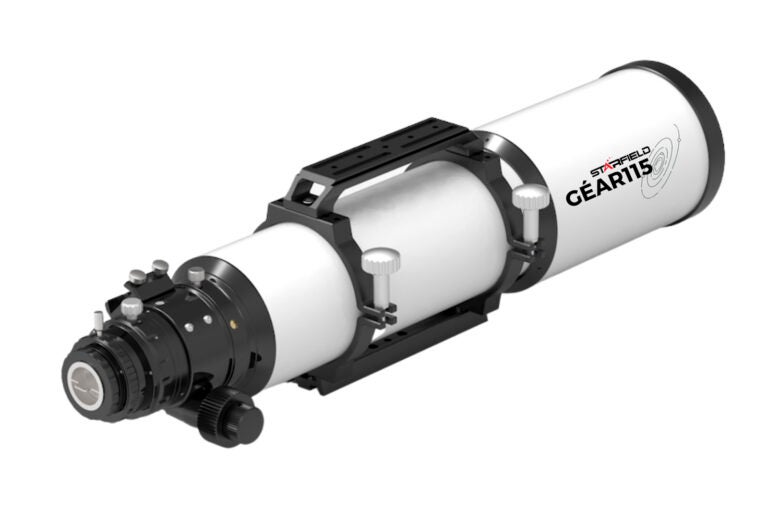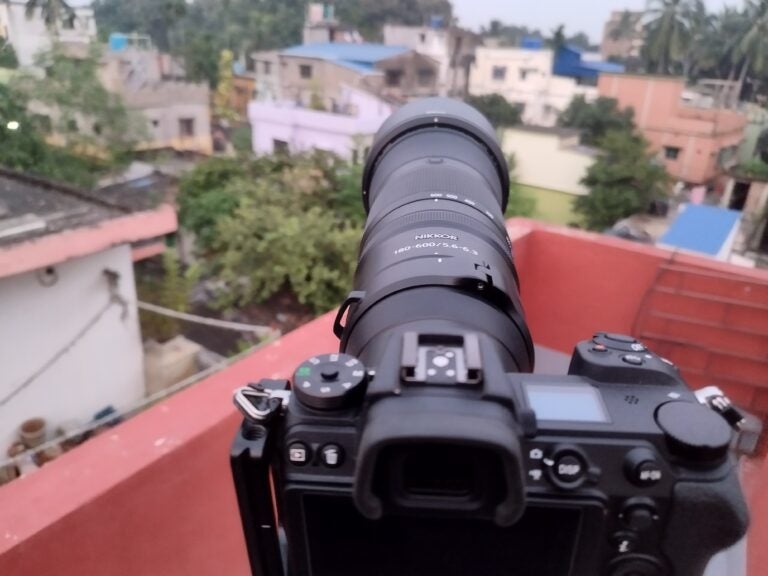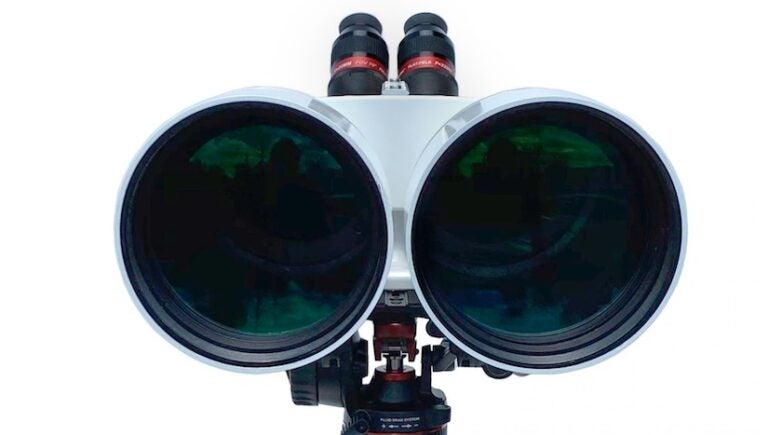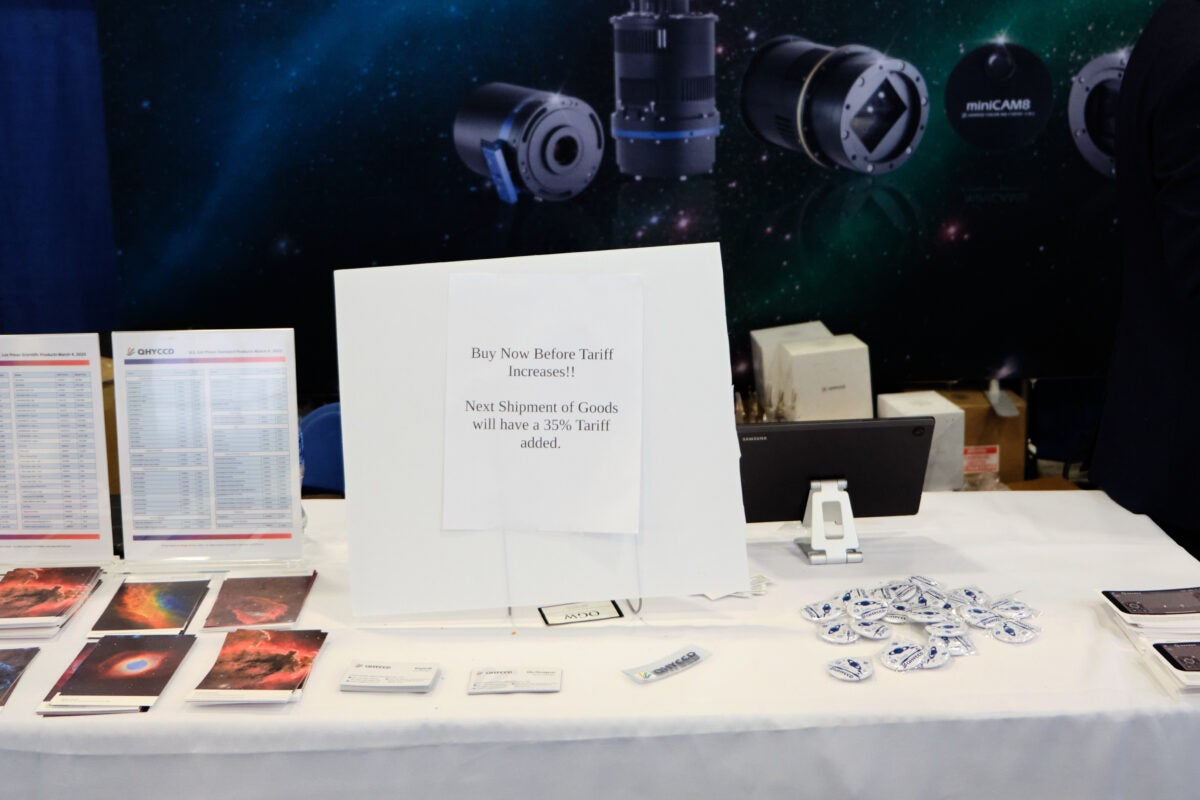
The telescope industry in the U.S. has been thrown into chaos as a result of the Trump administration’s escalating trade conflict with China, as manufacturers contemplate price hikes and worry about the possibility of slowing demand.
In the latest round of tariffs, U.S. President Donald Trump announced April 9 that duties on goods imported from China would rise to a whopping 145 percent, effectively immediately — up from 20 percent just days earlier.
At the same time, the administration paused tariffs on dozens of other nations that had gone into effect earlier that day, raising hopes that the U.S. is prepared to strike trade deals. But as the vast majority of astronomy products are manufactured in China, the 145 percent tariff is already having effects.
On April 10, Celestron told its dealers that it was temporarily freezing all shipments out of China and from its U.S. warehouse to dealers until the situation becomes clearer. “Hopefully we’ll have resolution soon,” Ben Hauck, senior vice president of North American sales for Celestron, told Astronomy.
Hauck said the widely held expectation is that the 145 percent tariff is a play for leverage, and negotiations will eventually establish a lower long-term rate. “But the question is: How long will it stick, and how much inventory will it affect? And what is the negotiated tariff going to be?” he said.
“If this 145 percent sticks for any period of time, it’s going to make bringing in new products next to impossible,” said Hauck. “Almost nothing we sell is viable at a 145 percent duty.”
Hauck said that Celestron is in “pretty good shape financially and if we need to go a few weeks without shipping, so be it.” But he has serious concerns about the ripple effects for dealers, especially smaller ones, which may have 4 to 6 weeks of inventory on hand. If tariffs remain in place at this level, Hauck worries the situation could be “existential” for them. “We do have some inventory here we can survive on but as that starts to affect dealers, that’s where things are going to go south.”
Overall, the mass-market telescope industry’s reliance on Chinese manufacturing means the situation is unlikely to produce a scenario where anyone benefits, Hauck said. “This industry, the manufacturing, outside of the really high-end, is almost exclusively done in China,” he said. “And as a result, it’s kind of, everybody loses.”
The view from NEAF
At the Northeast Astronomy Forum (NEAF) in Suffern, New York, where industry representatives from around the world gathered last weekend to show off their latest products, the tariff situation loomed large, never far from the conversation. Representatives from multiple manufacturers called it a “headache.”

Nearly every company Astronomy talked to at NEAF that makes their products outside the U.S. expected that tariffs would mean having to raise prices in the future. None expressed any realistic chance of moving their specialized manufacturing operations to the U.S. in the near term.
“Manufacturing a $10,000 telescope in the U.S. can be a viable thing,” said Hauck. “Manufacturing a $200 computerized telescope is impossible. No U.S. company is ever going to produce that type of product. It’s not going to happen. It cannot be done.
“We don’t have companies in the United States to provide inexpensive electronics, motors, hand controllers, optical tubes, glass — all of those things that go into a telescope, nobody’s doing that here. It’s not coming back. Tariffs are not protecting anything. They are just harming everything.”
Some could be harmed less than others. At NEAF, representatives from the small number of astronomy equipment companies who build their products in the U.S. did express relief at being better positioned to weather a trade war. But many of those representatives were still worried about increases to the cost of their imported materials, especially metals.
The pause on the reciprocal tariffs may bring some measure of relief to the small number of manufacturers in Japan and Taiwan, which were set to be hit with duties of 24 percent and 32 percent, respectively. And the European Union appears to have reached a detente with the U.S. for now, with Trump’s 20 percent tariff for the bloc on pause. However, the administration’s baseline tariff rate of 10 percent will still apply to those regions.
For Chinese manufacturers, the situation is more dire. Qiu Hongyun, founder of Beijing-based cameramaker QHYCCD, said that after Trump’s first two tariff increases imposed on China reached a total rate of 20 percent in March, the company raised prices on many cameras by 10 percent, absorbing the rest. But with the additional tariffs they can’t absorb anymore, said Qiu, and that cost will eventually reach consumers. (And that was when the overall tariff rate stood at 54 percent, not the current 145 percent.)
At NEAF, a representative for ZWO — the Suzhou-based maker of cameras and the Seestar smartscope line — said they were “worried” about the tariffs and absorbing what they could. Soon, though, the company will be forced to raise prices — although they are holding off as long as they can to see what others do.
Taking stock
Many vendors at NEAF with new products were also taking a wait-and-see approach, delaying pricing decisions until the tariff situation becomes clearer. For instance, Starpoint Australis has hit pause on preorders for their new lineup of portable observatories. “We want to be up front about what we’re charging,” said a company representative.
The timing for price hikes will vary across the industry depending on inventory. Specialty manufacturers who might have stocked up on supplies for the year may not feel the impact for a while, while larger companies with regular inventory turnover will feel it much sooner, said Hauck.
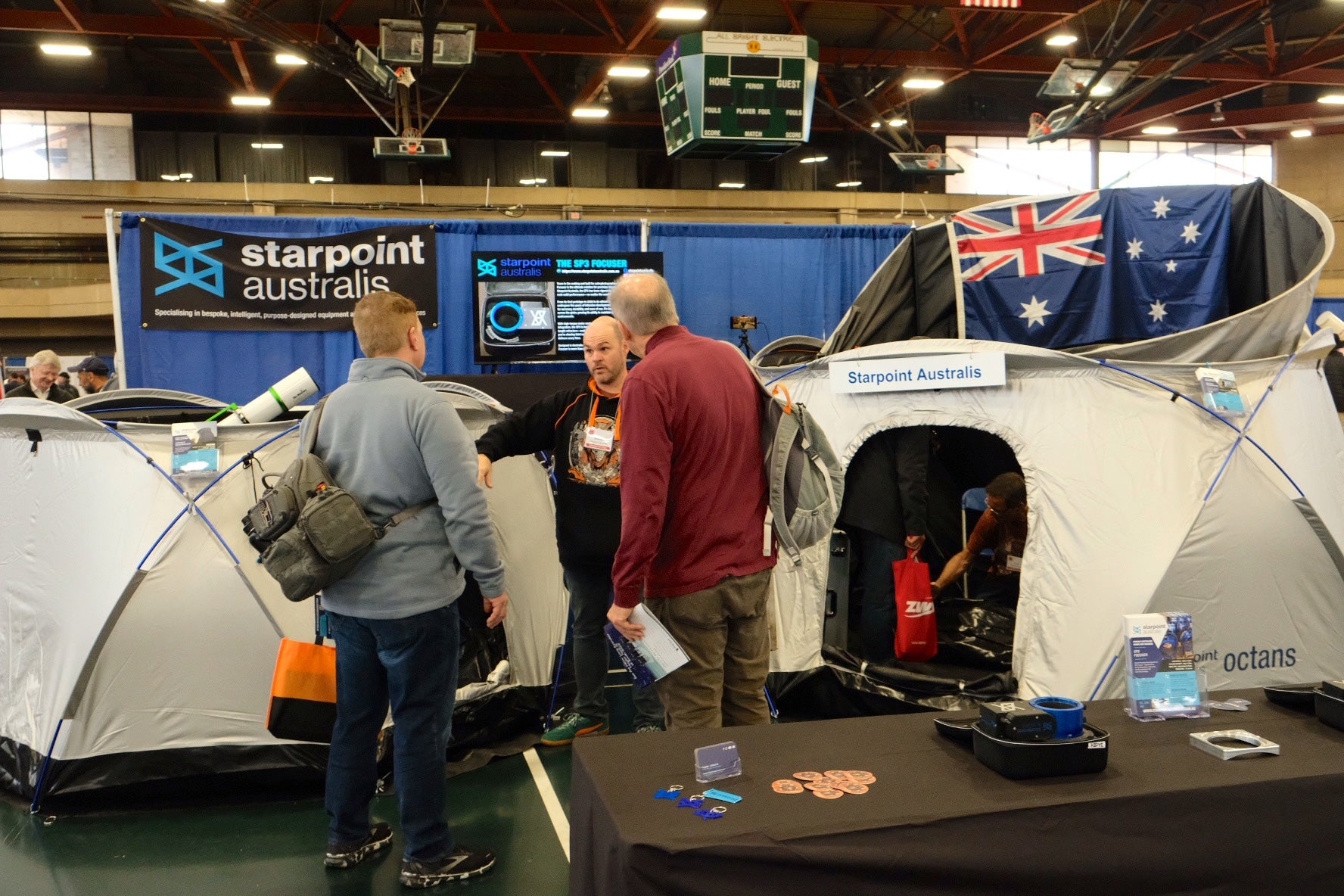
One company that thinks it will not be “too affected” by tariffs is Astro Labs-USA, according to its founder, Sanath Kumar Sastry. The startup is launching a unique series of portable truss-tube Dobsonians designed to be taken apart and packed as luggage. They import the wood for the lightweight end frames from India, and some custom components are made in Germany. But their mirrors are made in the U.S. — they have shipments of them already in hand — and the components are assembled in the U.S.
Long-term pain
Some vendors at NEAF experienced a boost in sales over the weekend as customers who had been pondering a purchase decided to pull the trigger before prices increased. A sign at QHYCCD’s booth urged attendees: “Buy Now Before Tariff Increases!!”
But after the preemptive wave of buying subsides, some foresee a longer lasting slump in the industry. “I think it’s going to be compounded,” said Hauck. “You’re kind of pulling sales forward” that would otherwise have been made later. “And then you’ll have the higher prices also reducing demand.”
An inflationary environment in the U.S. would only add to the misery. “If telescopes are more expensive and people have less and less disposable income to buy discretionary purchases, telescopes are going to get hit hard because you don’t need a telescope to survive,” said Hauck.
Asked on April 6 — when the provisional tariff rate on China stood at 54 percent — to rate the level of panic on a scale of 1 to 10, Hauck responded that “due to the fact that the current administration says one thing one day and then changes their mind the next day … the panic is 7, but if what is currently in place sticks, it’s going to quickly go to a 9.”
And if a series of escalations take the tariffs on Chinese goods even higher — exactly what played out — “the panic’s going to go off the scale,” said Hauck. “You’re going to be looking at 50, 60 percent decreases in sales. And that would mean companies going out of business, retailers going out of business.”
When Astronomy spoke to Hauck on April 10, with the rate on Chinese imports at 145 percent, Hauck said that even if a negotiated, long-term tariff rate ends up in the 50 percent range, he has the same concerns.
In that scenario, Hauck thinks the industry would survive but potentially in a dramatically altered, less accessible form. Makers of high-end products could weather the storm, and what little of the industry is based outside of China “could probably be developed in some areas.” But average families and working-class enthusiasts would likely be priced out of entry-level equipment.
For Hauck, the thought is “depressing.” Like many, he sees astronomy as not just a hobby but a valuable gateway to science education and a close-knit community that benefits society.
“When a kid looks through a telescope and sees the rings around Saturn for the first time and decides to pursue an education in the sciences and then a career in the sciences, that benefits our nation,” said Hauck. “It’s really painful to think about kids not having that.”
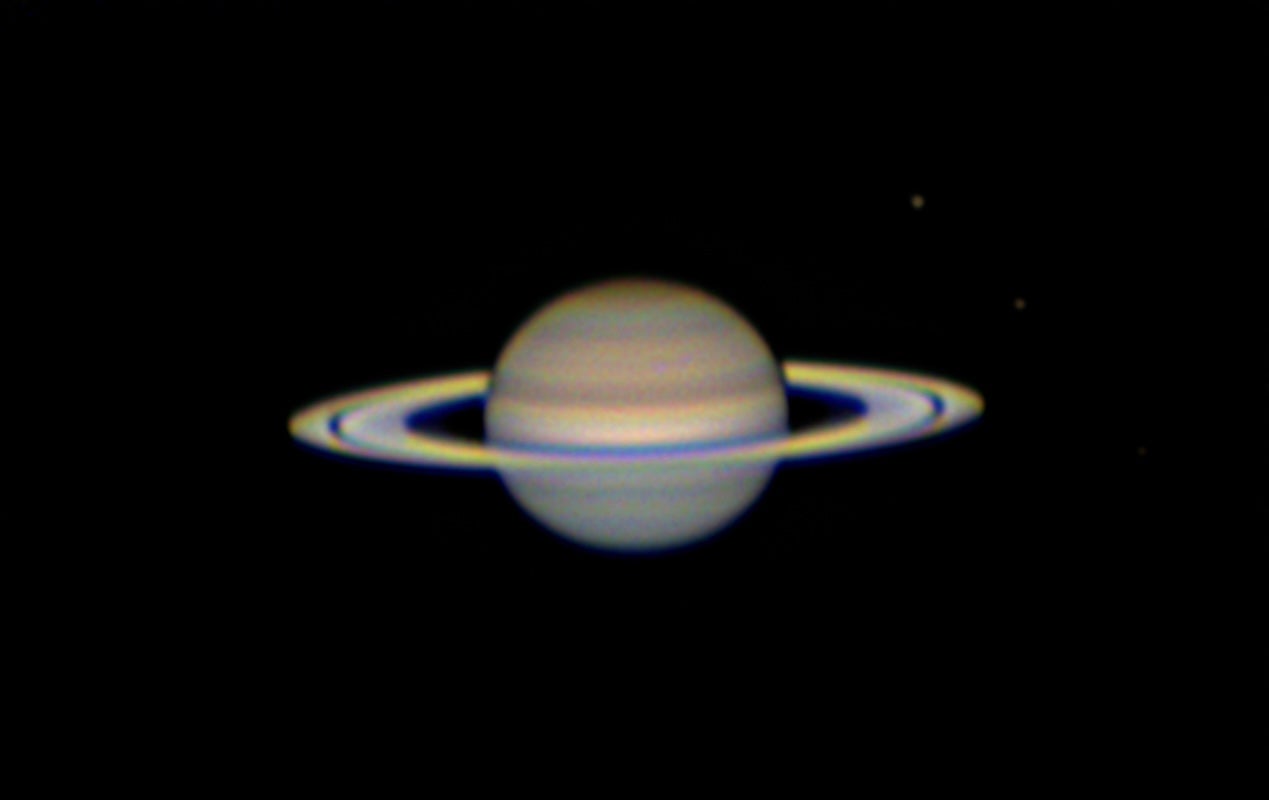
Hauck also points to the social bonds that form through the hobby, spanning the globe. “It’s a very healthy part of our society, and harming that is harming our society.”
If there is a silver lining, said Hauck, it is the possibility that those bonds may tighten as the industry hunkers down. “One thing that’s becoming clear is that this industry is probably going to come together, understanding that we can be competitors and we can also be friends and partners in ensuring that our astronomical community is not harmed to the point of destruction,” said Hauck.
“And one day these tariffs are going to go away. … So we just need to stay strong, stay united, weather the storm, and then come out of it and rebuild and be stronger.”
Editor’s note: This story has been corrected to remove a reference to the Sky-Watcher Heliostar 76Hα Solar Telescope, which has not yet shipped to dealers.

